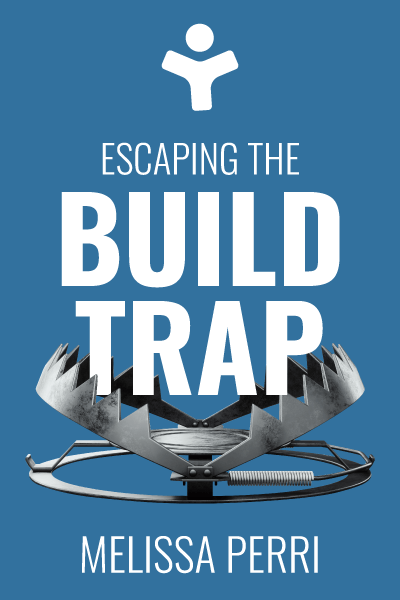
Escaping the Build Trap: How Effective Product Management Creates Real Value
by Melissa PerriEscaping the Build Trap is a practical guide that provides a roadmap for building a culture of customer-centric product management. This book offers a practical roadmap for transforming your organization's product management approach from output-driven to outcome-focused. Learn how to prioritize customer needs, communicate effectively within your team, and collaborate to deliver meaningful solutions that benefit both your business and customers!
Getting Out of the Build Trap
The "build trap" refers to a situation in which companies become overly focused on creating new features or products without considering whether those features actually add value to their customers. This can lead to a decline in market share and a loss of competitive advantage.
To avoid the build trap, product managers should prioritize customer value over simply delivering more features. This means focusing on the outcomes that customers are looking for, rather than just the outputs that the company can produce. Product managers should also shift from a project-based cycle (where the focus is on completing specific tasks) to a product-based cycle (where the focus is on continuously improving the overall product).
Actions to take
Being a Responsible Product Manager
The role of a product manager is to act as a bridge between the development team and the business side of a company. Essentially, they gather requirements and work to translate them into features that customers can use. So, to be successful, product managers need to have a good understanding of both the business and the customer to recognize the right opportunities that will create value.
For product managers to achieve their goals and deliver a quality product, they need to keep their focus on understanding users, analyzing systems, and executing market opportunities. Although Agile is a popular way for companies to create more value in software, sometimes, it can mean rushing to deliver features without fully comprehending what users need. To be effective in Agile organizations, product managers need to dig deep to understand users' needs and be ready to identify and execute on opportunities that align with them.
One challenge for companies is attracting and retaining top talent. To help with this, it's important to establish a standardized career path for product management. Unfortunately, there aren't many established paths for learning product management, as it's not commonly taught in college, and on-the-job training programs can be insufficient.
Actions to take
Bridging the Gaps
To become the leading global entertainment distribution service, organizations must address two gaps: the alignment gap and the effects gap.
The alignment gap is the difference between what employees actually do and what management wants them to do in order to achieve the organization's business goals.
On the other hand, the effects gap is the discrepancy between what was expected from employees' actions and what actually occurred. To bridge these gaps, organizations need to establish strategic intents that communicate the company's direction and desired outcomes.
One helpful approach that many companies use to achieve success is strategy deployment. This involves using a specific framework to ensure that the company's strategy is effectively executed throughout the organization. Examples of strategy deployment frameworks include Google's OKRs (Objectives and Key Results) and Toyota's Hoshin Kanri. Selecting the right framework and understanding what makes it good are crucial for success.
The foundation of any strategy architecture is the company vision, which sets the direction for everything that follows. The company’s vision should align with the organization's mission and values and provide a clear and inspiring picture of the future state that the organization aims to achieve. By aligning their strategy with their vision, organizations can better bridge the alignment gap and the effects gap and ultimately achieve their business goals.
Actions to take
Conducting User Research
User research is a process of collecting information about the needs, preferences, and behaviors of users to inform the design and development of products or services. It is a crucial aspect of the product development cycle as it helps identify pain points and opportunities for improvement.
One type of user research is problem-based research, which is also known as generative research. This type of research is used to identify problems that users are facing, and it involves going directly to the source of the customer's problem. It's essential to understand the context around a customer's problem because it enables product managers to create solutions that address the root cause of the issue, rather than just the symptoms.
Product managers are often referred to as the "voice of the customer" because they are responsible for understanding customer needs and translating them into product requirements. However, many product managers do not talk to customers as much as they should. By conducting problem-based user research, product managers can gain direct insights into customers' pain points, which can inform product decisions and ultimately lead to better user experiences.
Actions to take
Don’t just read. Act.


